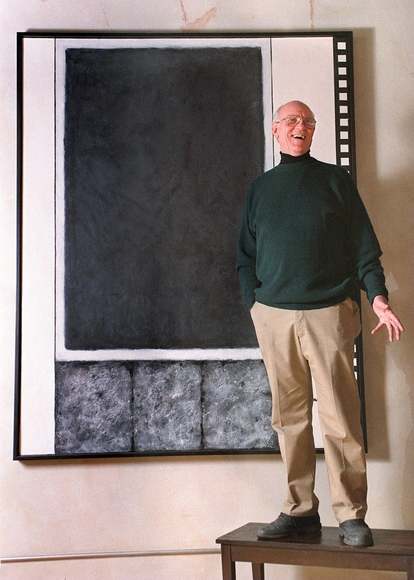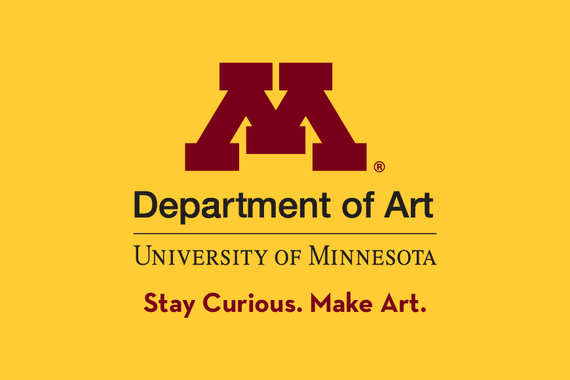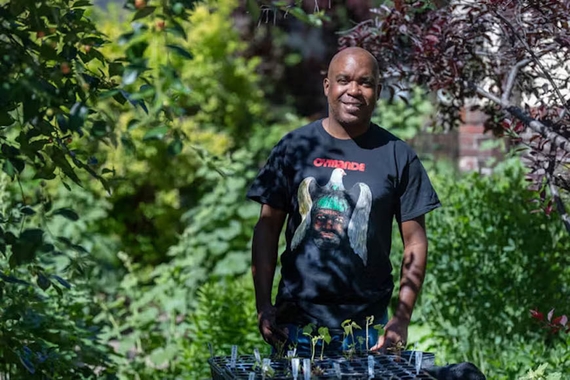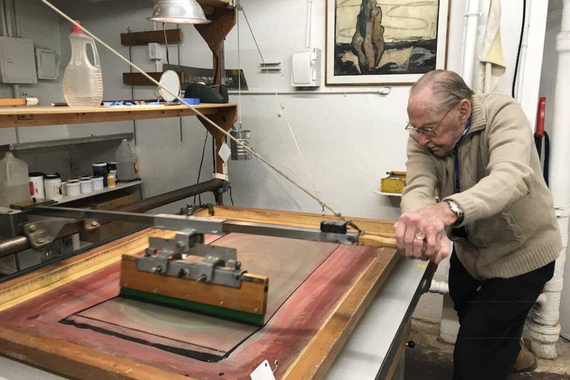Accomplished alumnus Dr. Harold Adams leaves the Department of Art a generous gift in his passing
The Department of Art is proud to formally announce the establishment of the Dr. Harold R. Adams Fund, thanks to a generous gift from his estate. An accomplished surgeon, veteran, artist, and alumnus, Dr. Adams passed away in 2018 at the age of 95. In establishing the Dr. Adams Fund, we hope to honor his memory as well as his love of art and learning by investing his gift in enriching the education of students yet to come. We also send our deepest condolences and gratitude to Harold’s family and friends on their loss and for helping us to continue his legacy.
“We’re extremely grateful for the generosity of this unexpected gift,” says Professor and Department Chair Christine Baeumler, “and we are excited to deploy these funds to further pursue our commitment to diversity, equity, and inclusion, and to continue our commitment to provide our students with an innovative contemporary arts education. Dr. Adams’ donation was motivated by the healing power of art, which makes this gift all the more meaningful at this time.”
With this gift, the Department of Art is establishing a recurring Artist-In-Residence Fellowship, bringing professional artists from a variety of backgrounds to work with our students, and we are thrilled to announce that our inaugural Dr. Harold R. Adams Artist-In-Residence Fellow is Fidencio Fifield-Perez, who will be joining us in the fall semester of 2022.
It has been almost three decades since Dr. Adams attended the University, but his generous gift is a testament to the lasting power of this place, the people in this department, and the practice of making art. After all, as Dr. Adams often said, art saved his life.

The Healing Arts
Nearly 40 years ago, at the age of 62, Dr. Adams was given a terminal diagnosis. An accomplished surgeon and obstetrician, Adams had contracted hepatitis B from an accidental needle prick while performing a biopsy, and his 33-year career in medicine came to an abrupt end.
“And so he said, ‘If I only have a little bit of time left, I’m going to take drawing classes,’” recalls Professor Emeritus Clarence Morgan, who instructed Adams during his time at UMN and counted him as a friend. Art was a passion Adams had fostered as a hobby since childhood, growing up on a farm in Kentucky and making art in his spare time with house paints and scraps of cardboard. "I practiced medicine from the time I was thirty,” he once remarked, “but I've practiced art since I was six."
With time running short, Adams dove in whole-heartedly to his art education, first at Macalester College, then at Hamline University, and finally here at the University of Minnesota. In a documentary produced by Berea College, Adams’ alma mater, artist and Hamline classmate Anne Labovitz remembers that “he just threw himself solely into his work. He was living, eating, and breathing painting or drawing.”
And then something miraculous happened: he kept on living and breathing. His infection, considered aggressive by doctors at the Mayo Clinic, simply vanished over the course of five years, without the benefit of treatment or medicine. Adams gave all the credit to art. “He believed that art saved his life,” says Dr. Lyndel King, former Director of the Weisman Art Museum.
With a clean bill of health and a newfound dedication to art, Dr. Adams enrolled in the MFA program in the Department of Art at the age of 69. Professor Morgan, who had just started teaching at UMN at that point, remembers having Adams as a student: “He was very intense, in a good way. He wanted to be around people who knew more than he did.”

That rigorous curiosity informed his paintings, which were large, expressionistic abstractions often related to his health issues. Adams would lay down paint and then sand it away, sometimes adding that dust back into the next layer. Art-making, for Adams, was immersive and meditative, providing both deeply introspective time alone in the studio and powerful social engagement during class critiques. Graduating with an MFA in 1994, Adams wrote in his thesis that, “As a consequence of these discussions, I derived benefits that are described by therapists who conduct group therapy sessions for patients with life threatening illnesses.”
His thesis paper ends with a personal note: “And so, to my professors, I say, in your accepting me into your program and giving me wonderful instruction and support, you are celebrating with me the most important single bit of good fortune of my life. My MFA degree will be as cherished, if not more cherished, than the MD degree.”
Dr. Adams stayed in Saint Paul for several years after graduating, working out of his basement studio and then from a studio in Lowertown. “That generation was tough,” says Morgan. “They knew how to work, and he liked to work hard at making art.” His paintings were large, impactful, and often dark, drawing inspiration from blood cells, x-rays, and liver biopsies. “A lot of it is biological imagery, but it’s not overt,” King says in the Berea documentary. “He’s also done a series on pain. You get a strong feeling of anguish and struggle in the works.”
When asked what inspired him to keep painting despite age and illness, Adams replied, “Well to me it’s simple. What inspires me to breathe? It’s the same thing. It’s as natural as eating, and as important.”
Establishment of the Dr. Harold R. Adams Fund & Artist-In-Residence Program
The primary use of the Adams Fund is to establish an Artist-In-Residence Fellowship program for visiting artists, a new and exciting opportunity in which a diverse array of artists from around the nation and around the world will come to the University of Minnesota for a one- to two-year appointment, engaging with graduate and advanced level undergraduate students. In addition to teaching, the Fellow will also engage in artistic research alongside the full-time faculty and contribute to departmental service. The faculty have designed the Fellowship to rotate across the department's four areas, eventually bringing in new and exciting voices to every area of our department. This fellowship is self-sustaining, so it will always be active.
In a sense, it adds a new Art faculty voice to campus every one to two years. Over time, this Fellowship will bring in a diverse group of artists to engage with the students in the Department of Art: sharing their lived experience with our student body, helping students find their artistic voice, and bringing a constant stream of creativity and vitality to the Department of Art for years to come.

Fidencio Fifield-Perez
We are pleased to announce that, after a national search, the inaugural Dr. Adams Artist-In-Residence Fellow is Fidencio Fifield-Perez. Fifield-Perez was born in Oaxaca, Mexico, but raised in the U.S. after his family migrated. His current work examines borders, edges, and the people who must traverse them. In his work, Fifield-Perez manipulates paper surfaces and maps to refer to the crafts and customs used to celebrate festivals and mourn the dead, which he learned as a child in Oaxaca. For Fifield-Perez, these techniques are a way to reconnect with a time and place no longer present. “My practice focuses on the authority given to paper objects over the people they document,” he says. Creating intricate collages, paintings, and installations, Fifield-Perez grounds the experience of immigration and bureaucracy in material and process, moving at times between rigorous abstraction and sumptuous realism.
You can read more about Fifield-Perez and see examples of his work here.
The Art Department is deeply grateful for the generosity and the trust Dr. Adams placed in us to support the vitality of contemporary arts education, and we are excited to welcome Fidencio to the Regis Center for Art this fall.
Special thanks to the Pioneer Press for the use of Joe Rossi's photos of Dr. Harold Adams from the newspaper's archive.



